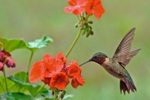SAMUEL P TAYLOR STATE PARK
Samuel P. Taylor State Park has over 2,700 acres of wooded countryside in the steep rolling hills of Marin County north of San Francisco. The park features a unique contrast of coast redwoods groves and open grassland.
The park features a variety of flowers and trees, including oak, tanoak, madrone, live oak, laurel and Douglas fir. California native wildflowers include buttercups, milkmaids, and Indian paintbrush.
The most common animal in the park is the black-tailed deer. There are also raccoons, striped skunks and gray foxes. Silver salmon and steelhead trout migrate up Papermill Creek to spawn.
The park offers a network of hiking trails and fire roads, making it easy to hike to the top of Mount Barnabe. Or, for a less strenuous visit, many visitors consider Devil's Gulch the best place in the park for a picnic or a place to relax.
A paved bike trail runs about three miles through the park, beginning near the entrance of the park. The trail is nearly level and follows the old Northwest Pacific Railroad right-of-way.
Because of natural disasters and destruction of habitat by humans, fishing is not permitted in Papermill Creek. Fishing is permitted in nearby lakes on Marin Municipal Water District land. A state fishing license is required.
The park features a variety of flowers and trees, including oak, tanoak, madrone, live oak, laurel and Douglas fir. California native wildflowers include buttercups, milkmaids, and Indian paintbrush.
The most common animal in the park is the black-tailed deer. There are also raccoons, striped skunks and gray foxes. Silver salmon and steelhead trout migrate up Papermill Creek to spawn.
The park is named after Samuel Penfield Taylor, who came to California from Boston in 1849 to try his luck in the gold rush. He actually found gold, cashed in, and entered the lumber business.
Purchasing 100 acres of timberland along Papermill Creek, Taylor built a paper mill and established a paper-making process. Using scrap paper and rags from San Francisco the mill produced newsprint and well as square-bottomed paper bags -- a novelty at the time.
Taylor built a resort hotel and Camp Taylor, one of the first sites in the US to offer camping as a recreational pursuit. The area was one of California's most popular and well-known weekend recreation destinations in the 1870s-80s.


